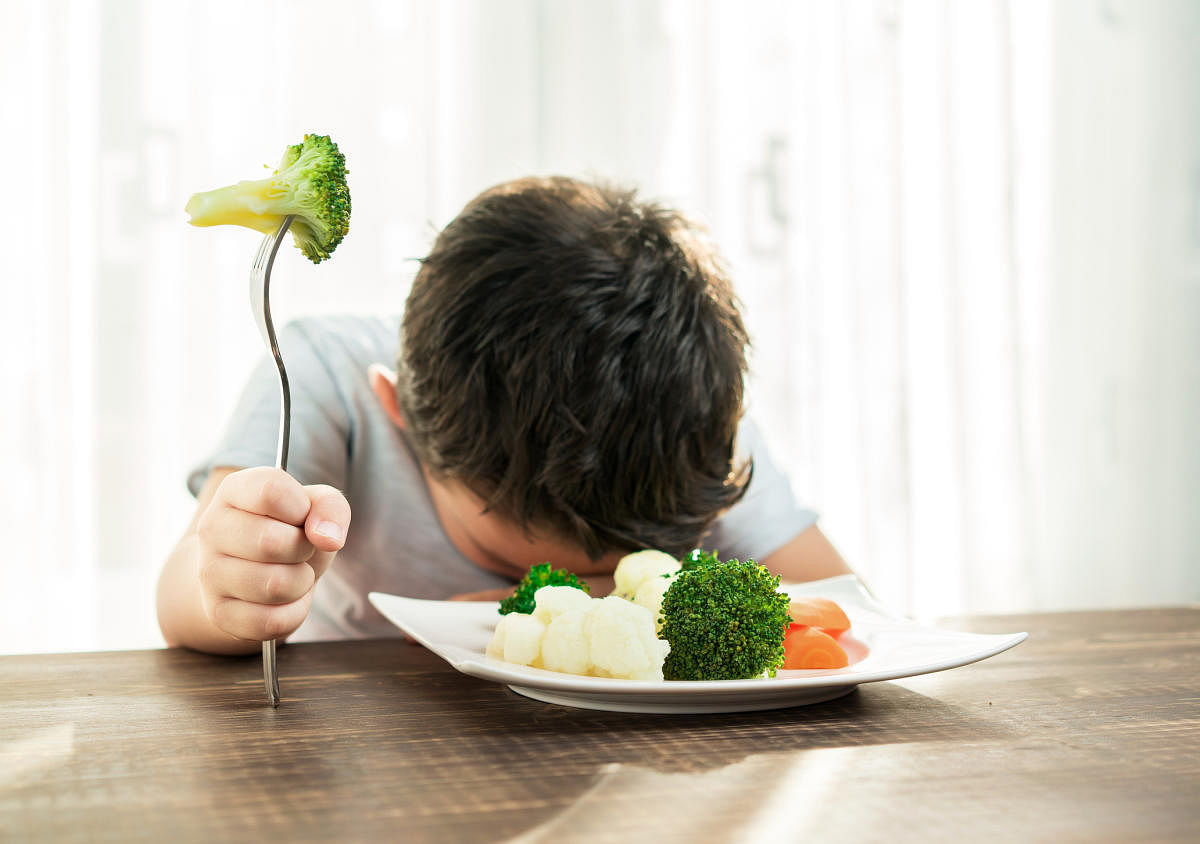Most parents complain of their children being fussy about food and how coercion does not work. So, a tactful and subtle steering towards a wholesome diet is the need of the hour. The influence of commercials and peer pressure add to the challenges. Here are some tricks to cut all the drama, threats and bribery and maintain peace and nutrition in meals; they work for fussy adults too!
Milk: If you believe in the goodness of milk and its importance in the growth of your little ones but they abhor it, fret not. Include generous amounts of its products
in things your children like to eat — more cheese in their pizzas, extra paneer in their parathas or curd in their chaats. Try flavoured yoghurt, milkshakes, smoothies
and sweets that are milk-based. Knead the roti dough with milk rather than water or cook the pulaos and biryani in milk. A little milk can be added to most thick, flour-based soups.
Vegetables: Make dodging and picking out vegetables from a plate impossible to do so. Some vegetables like carrots, beans and different kinds of gourds can be boiled and mashed along with the dal and seasoned to camouflage their taste as in sambars. Carrots grated finely can be added to many things — omelettes, paratha stuffings, grilled sandwiches, roti doughs, raithas, salads, pizza sauce and most gravies — where it even improves the colour. The ratio of vegetables to noodles, pastas and fried rice could be tipped in your favour. Boiled carrot when blended with milk, cardamom and sugar or honey, makes a delicious flavoured milkshake. The deal with instant noodles would have to be made with two or more vegetables like carrots, beans, capsicum, cabbage, beetroot or peas. These vegetables and yam and some greens can be added to the patties of their burgers too. If your child prefers quick bites like parathas, there’s a variety to make the stuffing with — radish, potatoes, cabbage, cauliflower or an assortment of two or more of them.
Dals: Dals can be given a makeover with the choicest of tadkas and chaat toppings. Moong dal and green moong can be mash-cooked dry with spices and hing and used as paratha stuffing too. Leftover dals can be used to knead the dough of rotis made from ragi, jowar, bajra or multigrains. Dosas made out of soaked and ground moong dal or 2-3 dals mixed together also taste good. See that you serve them with chutney/accompaniment of their liking. A small amount of gram flour or better still, sattu (flour made of roasted cashew, almond, millet, barley, and chickpea) can be added to the wheat flour while kneading to ensure a regular supply of proteins with their rotis/parathas.
Greens: Methi leaves can be added to most parathas, pulaos and gravies. Small quantities of cut and steamed spinach leaves can be quickly added to raithas, soups and salads. Traditional recipes of assorted greens of all regions go well when mixed with curd rice. You can hide little portions of dry cooked greens right inside their favourite vadas, bondas, cutlets and patties.
Fruits: Besides milkshakes and smoothies, fruits can be mixed with flavoured ice creams, custards and many desserts. Almonds can be powdered and added in their milk, soups and side dishes. Sesame seeds — a rich source of calcium can be extensively added to almost all dishes and bread and flax seeds can be sprinkled on salads and desserts. Caramelised nuts and dry fruits can be munched while watching TV.
Children generally love junk food. Do indulge them every now and then but with healthier versions. Besides the vegetables already suggested, soya granules or mincemeat can be added to the patties of their burgers; these can be dipped in a well-beaten egg before shallow frying. You could innovate on the upma by adding scrambled egg or mincemeat.
Developing children’s tastes towards healthy food involves a lot of playing on their minds. Just pay attention to their food preferences. If they constantly crave for the
tangy taste of chaats, top their non-favoured dishes with sweet-n-sour chutneys, chaat masala and curd. Add grated carrots/beetroots and sprouts in their bhel. If your child is the sort who treats mealtime as a mere ritual he can’t escape from, he/she can be fed with a power-packed balanced meal in one single dish like a multi-grain roll that has vegetables or meat with egg, a pulao that has lots of vegetables/meat and cooked in milk or a soup that has meat/vegetables and thickened with dal and a healthy flour. These are gulped down quickly without much thought given to the contents.
Presentation and plating makes food appealing to the non-interested. Funny faces made on pizzas and round-shaped sandwiches and well-decorated salads and fruits will tickle their palates, more so if they help you in the act.
Do appreciate good food habits but do not overtly disapprove of the bad ones. Be opportunistic — serve healthy foods when your children are in a good mood, excited about something or when they’re in the company of their friends to avoid opposition. Above all, inculcate good food habits yourself — for children are constantly absorbing all that they see around them.
